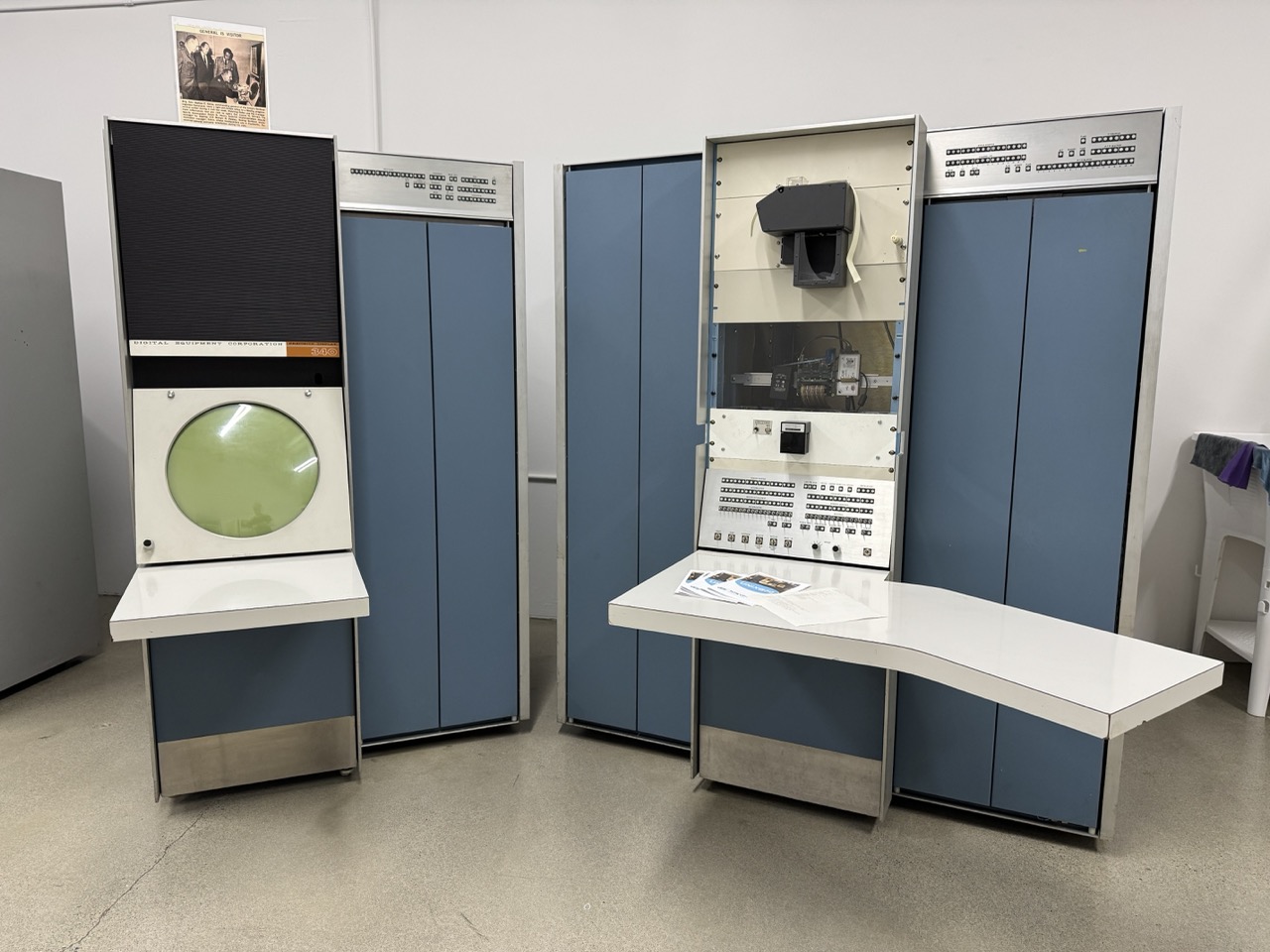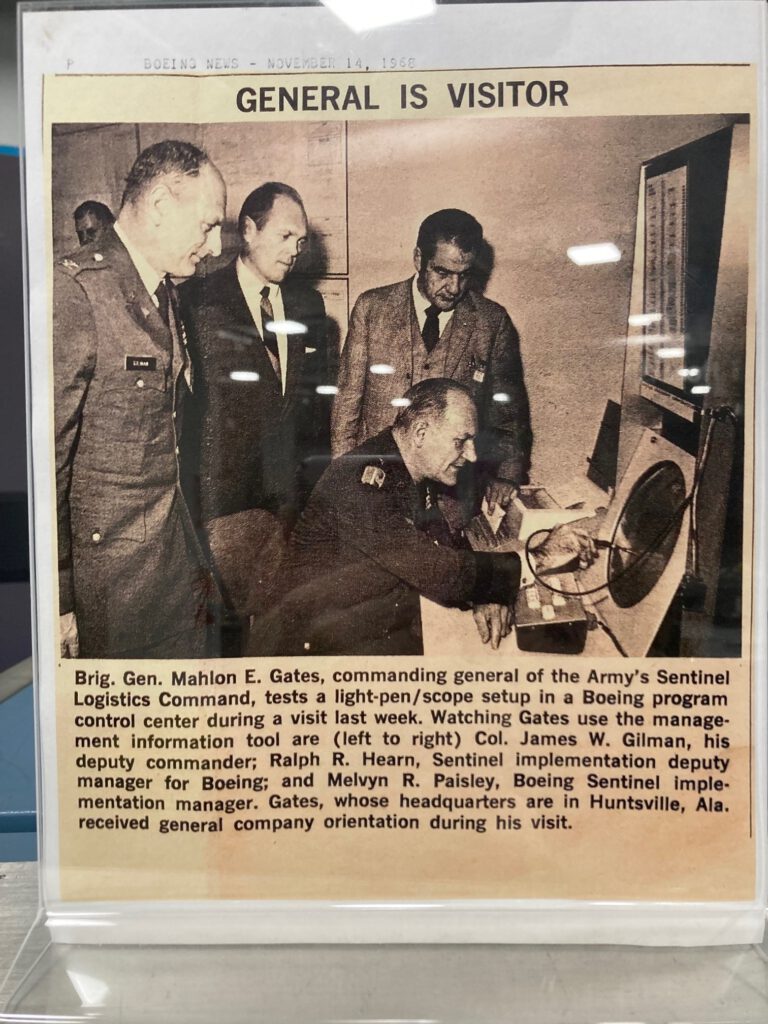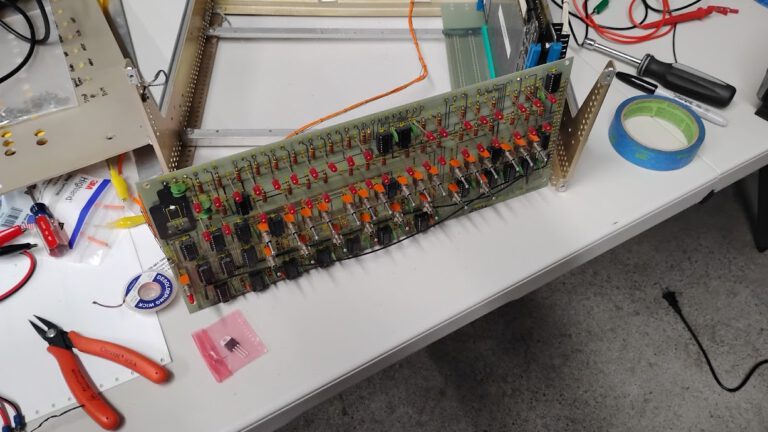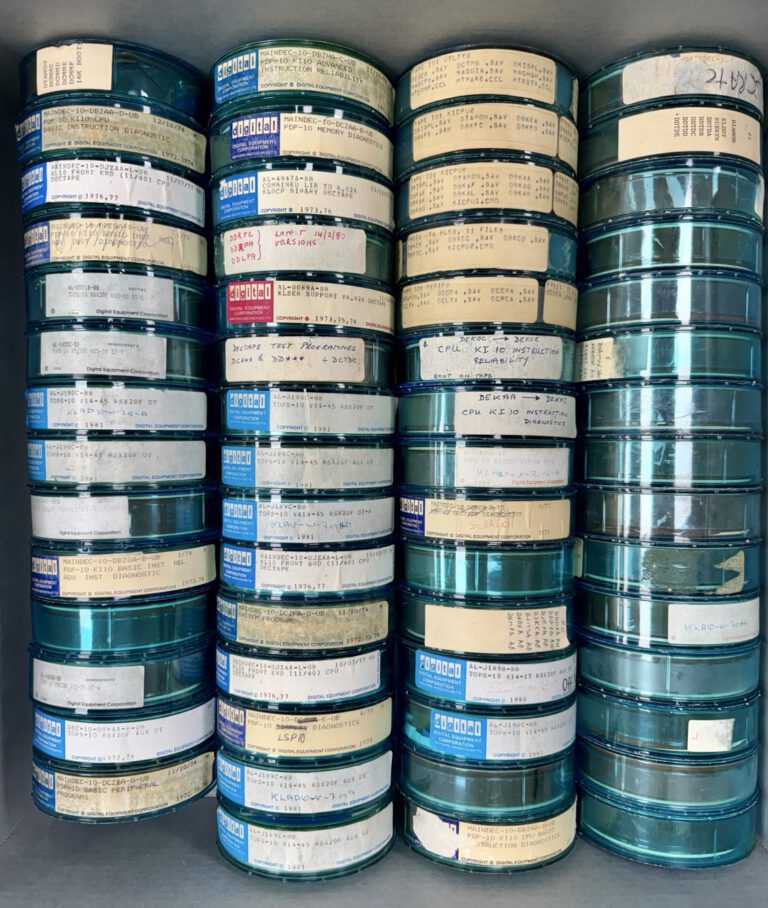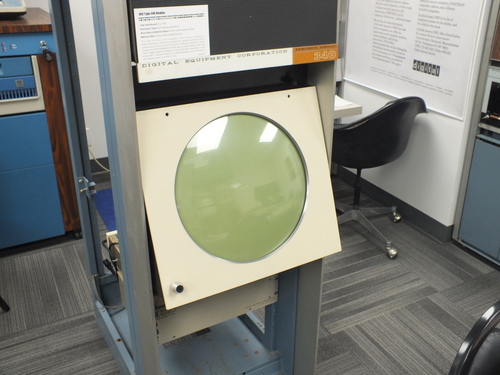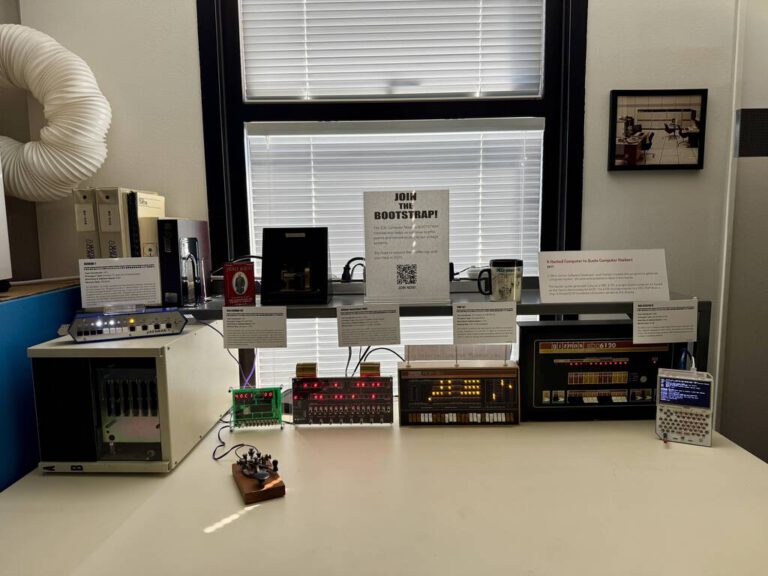Boeing’s PDP-7a
Boeing News – November 14, 1968
In November 1968, Boeing engineers demonstrated to Brigadier General Mahlon E. Gates, Commanding General of the Army’s Sentinel Logistics Command, a hybrid computing system built around a DEC PDP-7A and a Type 340 graphics display. The PDP-7A functioned as an interactive front-end processor, handling light-pen input and real-time display refresh, while an SDS-930 provided high-precision floating-point computation for missile defense simulations. The Type 340’s ability to render vectors and alphanumeric data under program control enabled Boeing to prototype battle management consoles where an operator could manipulate data directly on the screen. This configuration anticipated later command-and-control systems and represented an early example of distributed computing, coupling minicomputer interactivity with mainframe computational power. The demonstration, reported in Boeing News on November 14, 1968, underscored the PDP-7’s pivotal role in bridging interactive computing with aerospace and defense applications during the Cold War.
To support the preservation of Boeing’s PDP-7a, please consider a donation today.
September 2025
Charles and Bruce are tracing an intermittent bit which can get set reliable under certain conditions, but only predictably in others. On this type of computer the majority of the interesting signals can be found on the wire wrapped back plane. You can trace the logic paths there without even touching the cards on the other side.
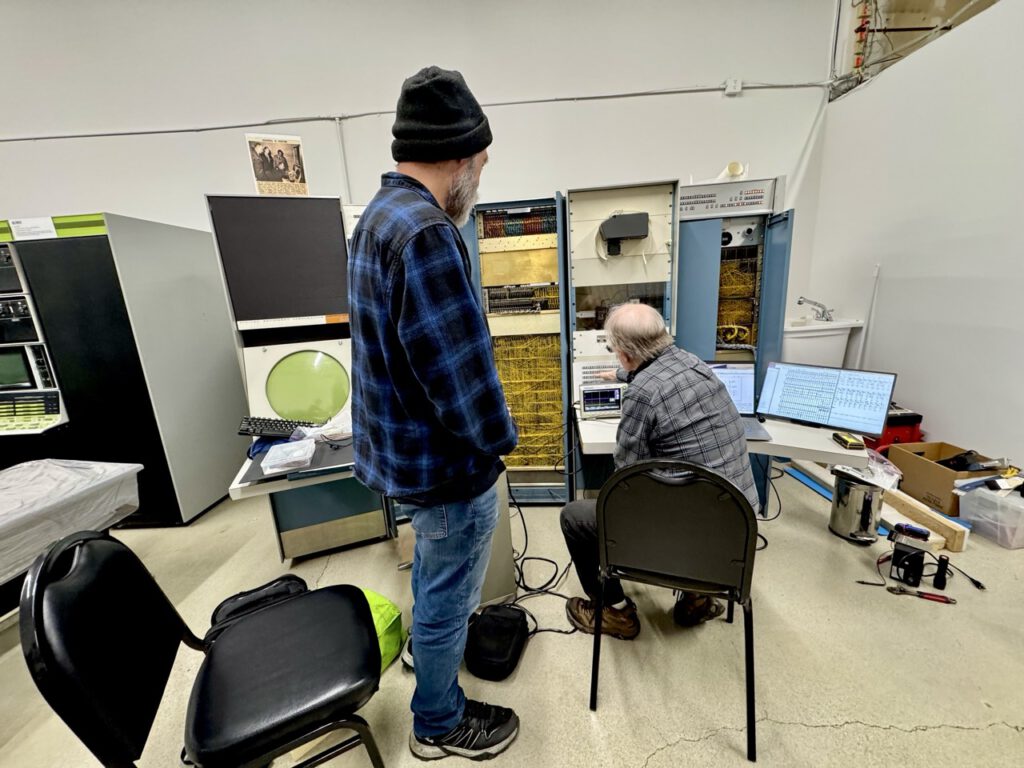
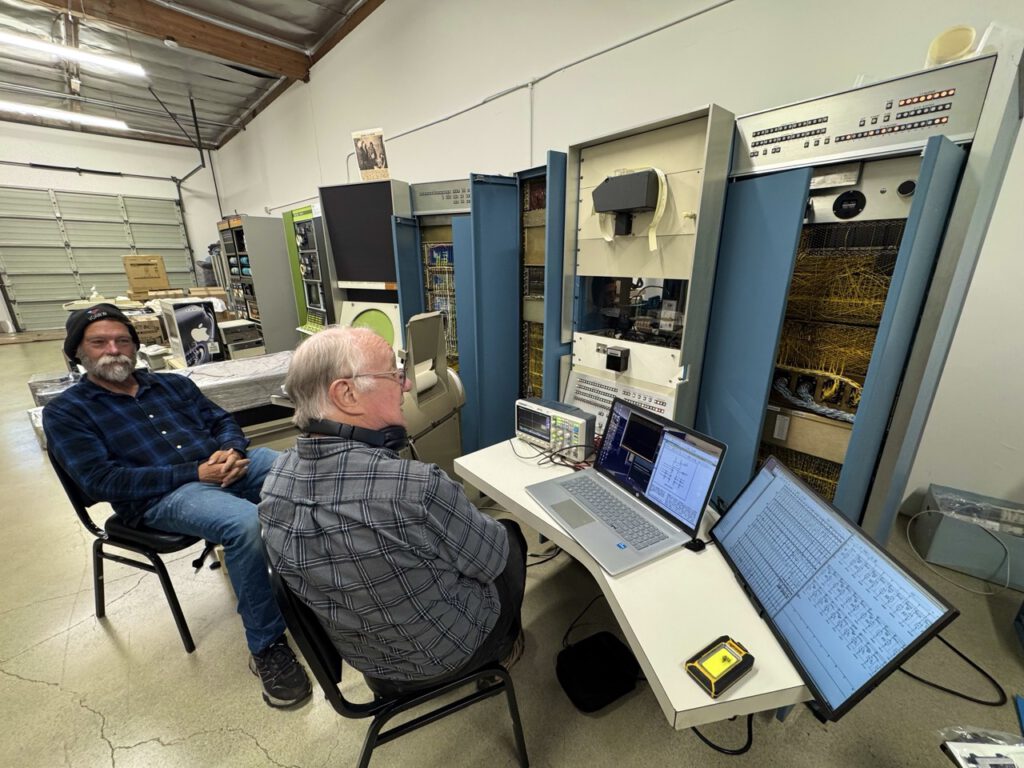
August 2025
This DEC PDP-7a was used at Boeing to process AWACS data fed by an SDS-930. The data could then be displayed and manipulated with a light pen on the DEC Type 340 point display. This machine uses an emulated drum-like memory which was made compatible with UNICS (UNIX) Version 0 by Josh Dersch. The drum-like memory hardware was developed by Jeff Kaylin based on the DEC RB09 as used at Bell Laboratories for UNICS Version 0.
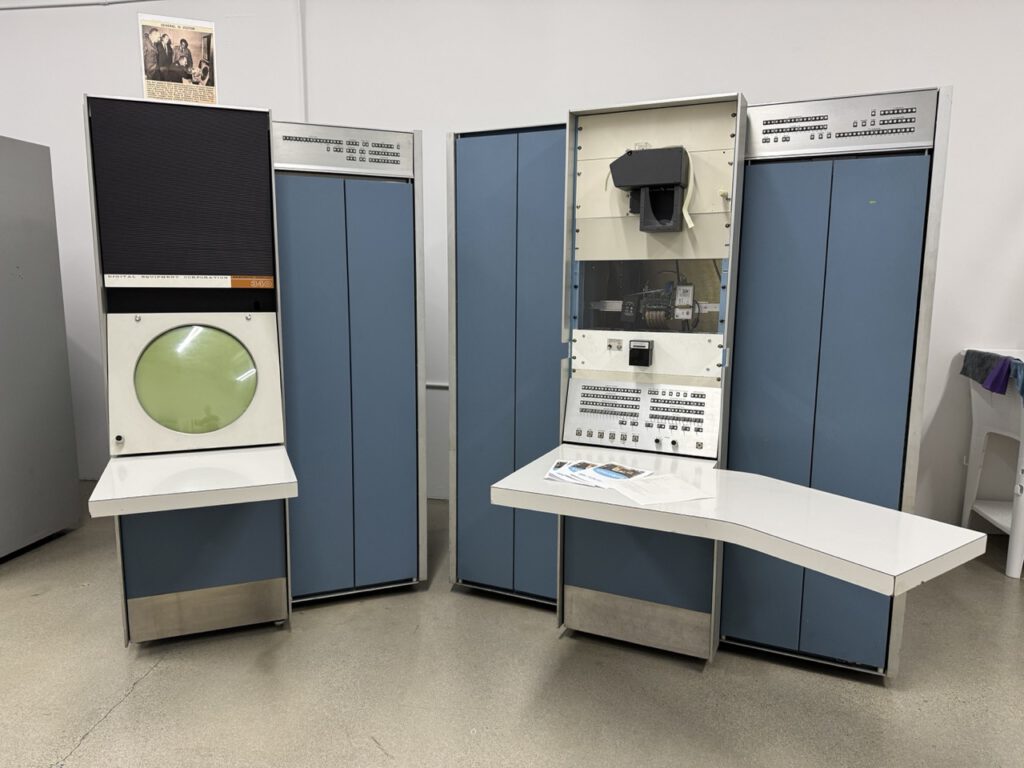
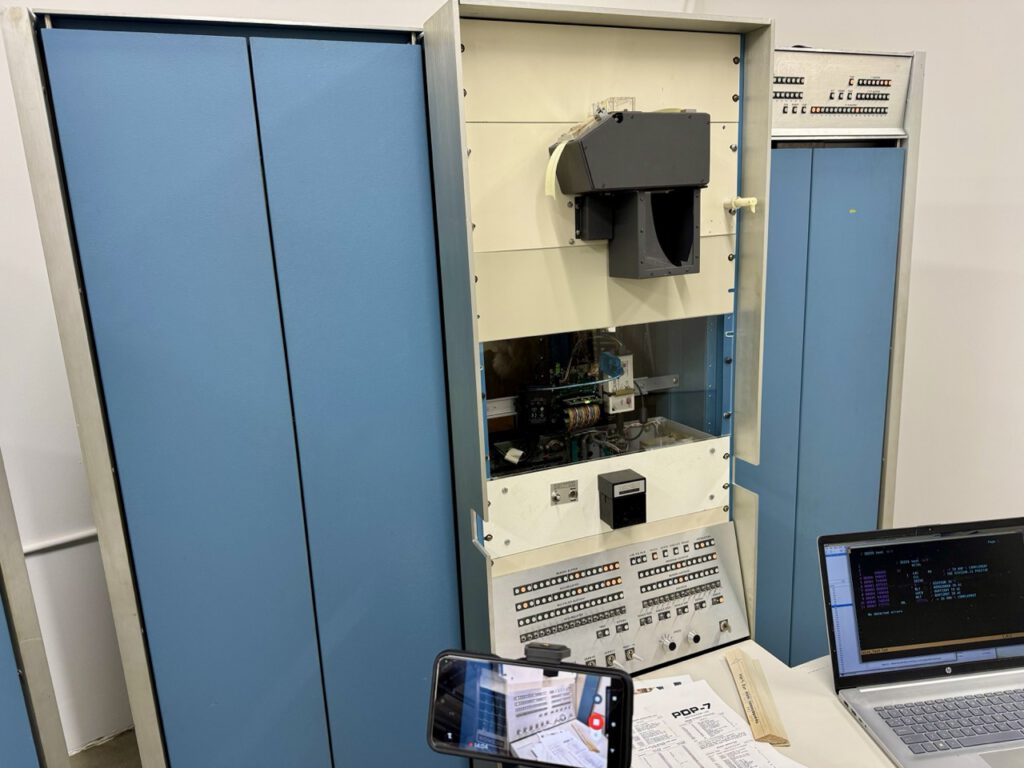
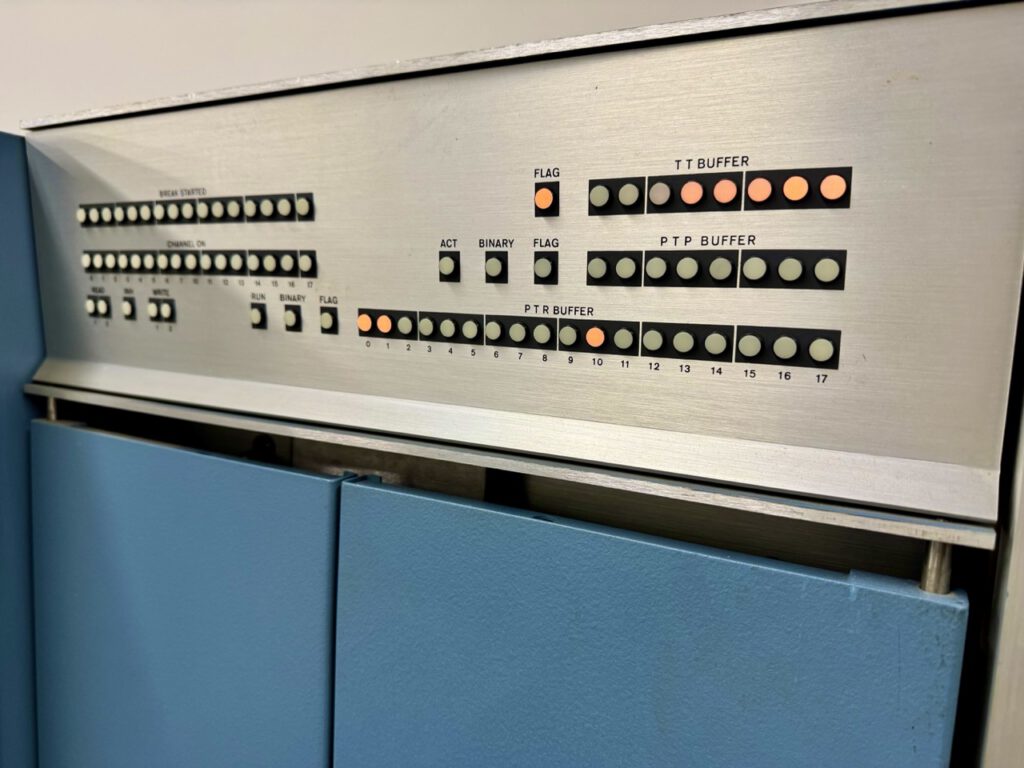
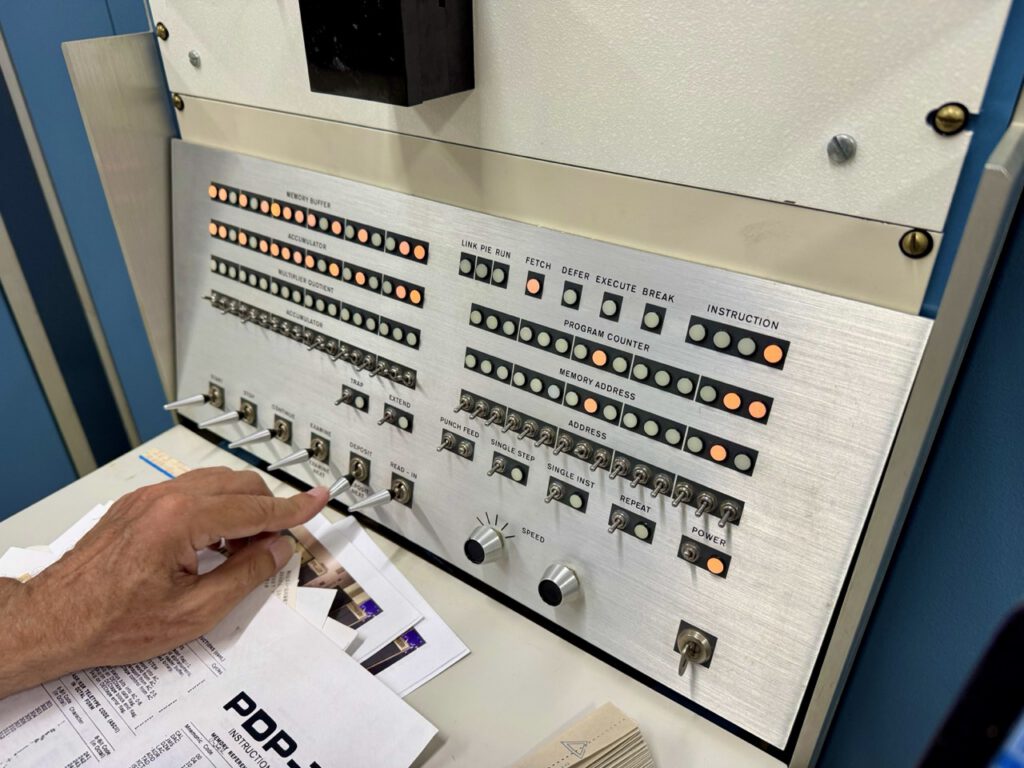
Resoration
The Deposit and Examine front panel switches, along with the Address and Data switches allow writing and reading memory. Experimenting with various data and address patterns One of the most interesting behavior was for addresses of the form xxxxxxxxxxxxxxx010, the most significant data bit would alternate between 0 and 1 for each successive Examine.
This being a easy and reliable test (keep pressing Examine), I started tracking the logic back to find the source; the memory code sense amplifier for that bit seemed to be the source of the alternating levels. Switching it with another sense amplifier moved the problem bit; putting them back and replacing the sense amplifier with a spare from stock solved that problem; but changed the pattern of other Examine sequences. The new most obvious problem was a data bit that appeared to be stuck on. Given that the front panel mechanical switches are a likely failure point, we pilled the front panel (a major operation) and tested all of the data and address switches verify they were working; they were. Next guess was poor cable connections; cleaned all of the front panel connectors and cable sockets and reassembled.
Now the machine would power up, but none of the front panel lights would come on. Head scratching, schematic reading, and arguing ensued. We finally realized that one particular cable had been reattached upside down. We were reversing the connector, but… we didn’t unplug the machine first, and that is the one cable carrying line voltage. Big fat spark.
The cable connector had a partly melted finger; we pulled the front panel and did not observe any damage to it,, concluded that the short had been to frame. Put it all back together, and none of the panel lights come on.
